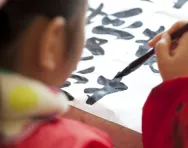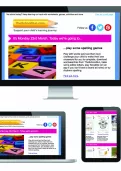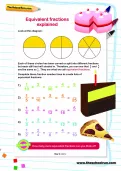Important update from TheSchoolRun
For the past 13 years, TheSchoolRun has been run by a small team of mums working from home, dedicated to providing quality educational resources to primary school parents. Unfortunately, rising supplier costs and falling revenue have made it impossible for us to continue operating, and we’ve had to make the difficult decision to close. The good news: We’ve arranged for another educational provider to take over many of our resources. These will be hosted on a new portal, where the content will be updated and expanded to support your child’s learning.
What this means for subscribers:
- Your subscription is still active, and for now, you can keep using the website as normal — just log in with your usual details to access all our articles and resources*.
- In a few months, all resources will move to the new portal. You’ll continue to have access there until your subscription ends. We’ll send you full details nearer the time.
- As a thank you for your support, we’ll also be sending you 16 primary school eBooks (worth £108.84) to download and keep.
A few changes to be aware of:
- The Learning Journey weekly email has ended, but your child’s plan will still be updated on your dashboard each Monday. Just log in to see the recommended worksheets.
- The 11+ weekly emails have now ended. We sent you all the remaining emails in the series at the end of March — please check your inbox (and spam folder) if you haven’t seen them. You can also follow the full programme here: 11+ Learning Journey.
If you have any questions, please contact us at [email protected]. Thank you for being part of our journey it’s been a privilege to support your family’s learning.
*If you need to reset your password, it will still work as usual. Please check your spam folder if the reset email doesn’t appear in your inbox.
Primary-school Chinese: the lowdown

Why teach Chinese at primary level?
Since September 2014 all children in Key Stage 2 have learned a foreign language as part of the new national curriculum in England. When the Department for Education (DfE) drew up its draft curriculum, Mandarin Chinese was one of five modern languages on the approved list. That list has now been withdrawn, giving schools more freedom over which language to teach, but a small percentage of forward-thinking schools have opted for Chinese over European languages.


Start a unqiue learning programme!
- Weekly programme for each school year
- Worksheets sent direct to your inbox
- Keeps your child's learning on track
‘Mandarin Chinese is one of the fastest growing languages in the world, and it links brilliantly with other curriculum areas such as geography and history,’ says Katharine Carruthers, director of the Institute of Education Confucius Institute (IOE CI). ‘It opens children’s eyes to other cultures, and creates quite a buzz in the classroom.’
The earlier a child starts learning languages, the better, and that particularly applies to Mandarin. ‘Primary school children tend to be unselfconscious about speaking Chinese, and mimic it beautifully,’ Katharine says. ‘They don’t have any of the worry about tone and pronunciation that older children have.’
How is Chinese taught in primary school?
Although some schools will be fortunate enough to have a Mandarin-speaker on their staff, many will have to train a teacher to take responsibility for Chinese lessons, through schemes such as the IOE CI’s Confucius Classrooms project, which links primary schools with secondary schools that already teach Chinese, and enables schools to share resources and develop lesson plans with each other. The project aims to include 30 schools in its first year, reaching 3,500 children. Other options include teachers from China coming over to the UK on a short-term basis and working in schools to get Chinese lessons up and running, or schools bringing in teachers and facilitators from outside – for example, from local secondary schools.
There’s also a range of teaching resources that can be used by non-Mandarin-speaking teachers, such as Dragons in Europe, a series of workbooks with accompanying website that teaches Chinese through games, activities and cultural notes.
This programme is being used in Key Stage 1 at RJ Mitchell Primary School in Essex. ‘A typical lesson is very interactive; we practise the pronunciation out loud, and the children have a go at writing the characters on their individual whiteboards,’ says Year 1 teacher Ruthie Davies. ‘We then go off and do some activities from the workbook, while small groups have a go on the website. None of our teachers have any Mandarin experience; we’re learning at the same time as the children.’
What standard will be expected of your child?
Although the DfE hasn’t yet announced how children will be assessed in languages, the curriculum aims for them to:
- Understand and respond to spoken and written language
- Speak with increasing confidence, fluency and spontaneity, and continually improve their pronunciation
- Write at varying lengths using a variety of grammatical structures
- Develop an appreciation of a range of writing in the language.
‘It’s likely that speaking and listening will develop faster than reading and writing, but children also love the calligraphy side of Chinese, using a brush and ink to write the characters,’ says Katharine.
Isn’t Chinese too hard for primary pupils?
Some people question the wisdom of teaching a language with a whole new system of writing to children who are not yet fully proficient in their own language, but results suggest that they take to it surprisingly well. ‘We’re finding that because Mandarin is so far removed from English, there’s less likelihood of getting the two languages confused,’ says Stephanie Driscoll, a Year 2 teacher at RJ Mitchell. ‘The children are picking it up really well, and have spontaneously started responding to the register in Chinese. We’ve also got quite a lot of siblings in Years 1 and 2, and they’re encouraging each other at home.’
Katharine agrees. ‘There are aspects of Chinese that are difficult, but one primary school that we’re working with is doing short 20-minute blasts of Chinese teaching each day, and the children’s speaking and listening is approaching GCSE level,’ she says.
Exploring Chinese with your child
If your child is learning Chinese at school and you want to help them get to grips with it, or if you fancy giving it a go yourself, try these resources:
- Better YCT is a series of apps that helps children learn Mandarin with games, songs and stories (for ages 4 to 14).
- BBC Bitesize KS2 Mandarin offers video clips for Chinese language learners and games and activities that introduce Chinese-language basics such as numbers and sounds.
- Ancient China for Kids: packed with information about every aspect of Chinese culture, with games, calligraphy and drawing exercises.
- Buy primary-school workbooks and access to online games for children learning Mandarin at Primary School Chinese
- Snowflake Books produce books of Chinese stories and legends with English and Chinese text and an educational CD.
- Chineasy is a new illustration-led system that aims to help children and adults grasp the concept of Chinese ideograms (the building blocks of the written language). The books are published by Thames & Hudson, or you can get a flavour of the method from author ShaoLan's TED talk introduction, below.












